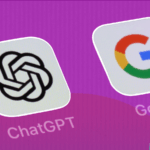For AAPI Heritage Month, we sat down with Lynnwood Bibbens, CEO of ReachTV, and Keshia Hannam, Editor in Chief of Eastern Standard Times, to discuss the importance and impact of their partnership.
Q: Lynnwood, as the CEO of a Black-owned media business, how does ReachTV’s partnership with EST Media align with your vision of fostering unity and diversity?
LB: Since I was a little kid Black culture and Asian culture have been intertwined. Partnering with EST Media allows us to bring those stories that intersect Black and Asian cultures to our viewers.
Q: How do you plan to use the storytelling power of ReachTV to help educate, inspire behavioral change and combat anti-Asian sentiments prevalent today?
LB: The stories you see don’t properly reflect the truth. Through our partnership and these documentaries, we will be able to educate and inspire people to know that we’re ALREADY intertwined and that our communities thrive off each other. In this highly political environment, most people focus on the negative when 99% of the stories are inspiring, they just need to be captured and shared!
Q: Keshia, as the Editor-in-Chief of Eastern Standard Times, could you expand on how the new series, “Modern Asians: Unique & Unified“, is going to challenge and celebrate narratives about Asian people and culture?
KH: We know the word “Asian” is wholly inadequate to describe to world’s largest continent. 60% of the world cannot and should not be reduced to one word. However, we’re not there yet. To most of the West, Asian is all that people see when looking at those who have Indian, Korean, Filipino, Mongolian etc heritage.
We hope to speak to the plurality. In Asia, no one says they’re “from Asia”. We say we’re from Hong Kong, Indonesia, China etc. However in the US, you are labeled as Asian.
If we do not acknowledge that gap–that we need to educate while unifying as a community–it will be a long time before we see real change. And at the end of the day, we have more in common than what separates us. We hope to speak to that, while limiting erasure.
Q: Can you talk more about the importance of giving the Asian community a platform to tell their own stories, as is the mission of Eastern Standard Times?
KH: When I was a journalist in Hong Kong, editors of ‘global’ media companies like The New York Times, CNN, the BBC etc decided which of my stories were considered newsworthy. These editors were usually not from Hong Kong, and not from the Asian region. That bugged me, because I knew what stories mattered to my community, but those stories rarely saw the light because distribution was gate-kept by people not of the community.
By handing the microphone to people who have LIVED the stories we are helping to share, we not only make sure we respect and dignify the subjects of those stories, we create a more authentic and accurate narrative.
Q: Given the recent spike in hate crimes against the Asian community, what are your hopes for this new micro-documentary series in fostering understanding and empathy towards the AAPI community?
KH: We hope that these stories humanise the people behind the headlines and stats. Asians have come to (inaccurately) represent many hateful things in this country, and we believe that so much of that the media has to answer for. If we understand that Asians are people, with families, dreams, fears, hustles, just like everyone else, we hope there will be more understanding. Storytelling is the great amplifier of empathy.
Q: Can you tell us more about the specific themes that “Modern Asians: Unique & Unified” will be exploring? For example, how will the series tackle issues like ageism, art, racism, and fashion?
KH: We were very intentional in curating these stories. We want you see Khahn Ong, who grew up in Black and Latin communities and now creates streetwear about Vietnam because his outlet — like many Black & Latin creators — was art. We wanted to show you how a Taiwanese grandma trying to connect with her kids came to crush League of Legends, so hopefully you can take her out of a box. Our stories don’t play into stereotypes, and in fact, offer an alternative, powerful and varied display of Asian culture and people. Hopefully one that is much more representative of many of our lived experiences.
Q: The series is set to be featured not only on EST’s website but also on ReachTV network. How does this wide accessibility factor into your overall strategy for the series?
KH: Reach TV have been amazing partners in taking our audience to the next level, in no small way because Lynnwood is such an incredible advocate of all marginalised communities. But he also gets that culture comes from here. And that in working together we become much more powerful and influential. As he says above, we have always been supportive of each other. We need the stories that reflect the truth.
Q: This series is going to explore a range of cultures within Asia. How do you make it feel authentic when you’re covering such a broad range of cultures and experiences?
KH: There will always be divergence in people’s experiences and perspectives. I think the only way to ensure that you are speaking to them as authentically as possible is to ensure we are creating WITH those in the story. That’s why our team is 100% Asian (of many nationalities) and we never fly anyone to cover a story–we work with people who are on the ground from that community.
Q: Finally, what do you hope the audience takes away from watching “Modern Asians: Unique & Unified”?
That Asian culture and people are rising, and in the process we hope that many other people rise too. Asian culture has been lumped into one category for so long: now, a new Asia is coming, individual and nuanced but unified and ready to heal and work to create more equality for as many people as we can on the way.








